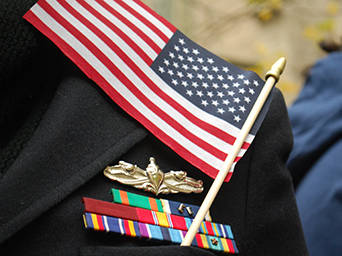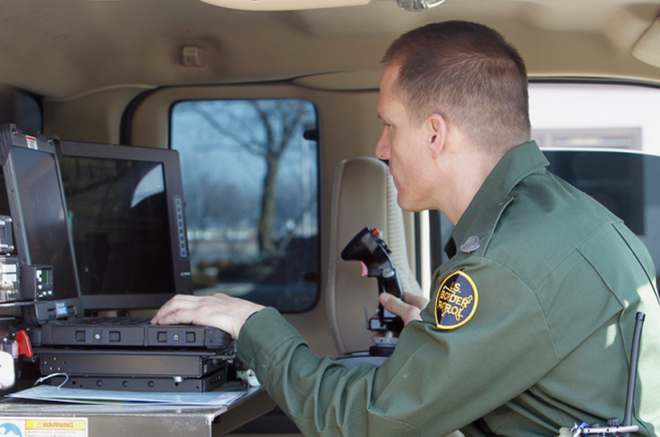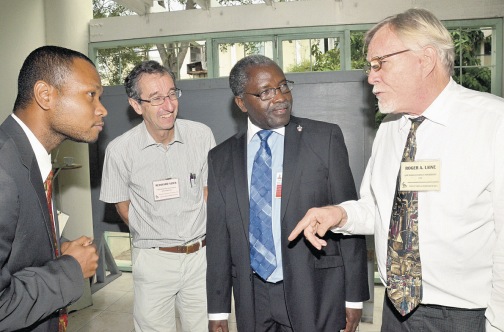World War II foot soldiers honored
Written by GLRAdmin on January 13, 2014
During a forced march from Belgium to southern Germany in the closing months of fighting in Europe in World War II, U.S. Army prisoner of war Cpl. Michael Romanelli said he thought often of getting home to any sort of life he could make.
He and hundreds of captured soldiers slept many nights in the snow and woke to keep walking one more day, two months straight, more than 300 miles, surviving on a daily ration of a slice of dark bread. Romanelli, now 91, recalled thinking “I’ll be happy to go home and dig ditches for the rest of my life.”
The man from a coal-mining town in eastern Pennsylvania did far better than that, completing college and graduate school and pursuing a 30-year career as a mathematician and computer programmer at Aberdeen Proving Ground. Now, thanks to the efforts of a former Aberdeen colleague, he and three other World War II combat veterans in Maryland have another medal to add to their military decorations.
They’re among the latest to receive the Order of Saint Maurice medal awarded jointly by the National Infantry Association, a Georgia-based organization devoted to the foot soldier, and the U.S. Army Chief of Infantry. Since the award was established in 1994, 14,224 have been approved, the majority to those who served in the Gulf War and after.
The four World War II combat veterans in their late 80s and early 90s gathered recently at Glen Meadows Retirement Community in northern Baltimore County, home to three of the veterans and to Pete Reid, who took up their cause — one of an array of tributes being offered around the country to soldiers of a vanishing generation.
Reid compiled their stories and sent them to the National Infantry Association, and he hopes to soon usher all four men to see the National World War II Memorial in Washington.
Veterans have been making the pilgrimage to the World War II and other war memorials free of charge under the auspices of the Honor Flight Network. The organization, founded in 2005, emerged out of a sense of urgency to pay tribute to World War II veterans, more than 600 of whom are estimated to die every day, according to the Department of Veterans Affairs.
Jim McLaughlin, chairman of the organization, said veterans usually seem emotionally moved when passersby stop to shake their hands and thank them.
“As a group they’re about the most stoic people you want to meet,” McLaughlin said. “They’re not looking for recognition, but they appreciate it.”
John Raughter, a spokesman for the American Legion, said he senses greater public awareness of the diminishing ranks of surviving World War II veterans. At Pearl Harbor Day and other commemorations, he said “people seem to realize how special it is to have a World War II veteran in the audience.”
The number of living American World War II veterans is variously estimated at between 1.2 and 1.7 million. About 16 million Americans did military service during the war, nearly three-quarters of whom served abroad, according to the Census Bureau.
Reid, 80, who is retired from Aberdeen Proving Ground, said he mounted his own personal effort on behalf of Romanelli, George E. Turner Jr., Paul A. Guntzel and Alfonso A. Roberty simply because he thought recognition was due.
“I admire them,” said Reid, who knew Romanelli at Aberdeen and Roberty through Reid’s wife, Rachael, who taught in Harford County Public Schools, where Roberty served 37 years as teacher, administrator and superintendent. Reid met Guntzel and Turner at Glen Meadows, where they live.
All four men seem to live up to the image of the World War II veterans who did their service, came home, pursued careers, raised families and didn’t talk much about the war.
Rachael Reid said people in the school system never knew about Roberty’s military service. Roberty said his oldest daughter, Paula, did not know the details of his war experience until the ceremony this month at Glen Meadows for the Order of St. Maurice Award.
“The first thing she said was ‘Dad, I didn’t know you did something like that,'” said Roberty, 87, who lives in Bel Air.
He said that after the war, “I just tried to get rid of it. … I didn’t talk about it. My contribution is no greater, perhaps smaller than thousands of others who were in that division.”
Drafted out of high school in West Virginia and shipped overseas at age 18 after 15 weeks of training, Roberty served in the 71st Infantry Division. As the Allies closed in on the center of Adolf Hitler’s Third Reich, Roberty took part in the drive across the Siegfried Line, a heavily fortified boundary along Germany’s western border.
Mostly, Roberty remembers feeling scared and ill-prepared. “I was shot at and I was watching guys die who were in my company,” he said.
“I didn’t go with reluctance,” he said, but “I was not up to the task.”
He received five medals before the Order of St. Maurice, including the Combat Infantryman Badge and the European Theater Operations Medal with two battle stars.
Turner, 93, was also in the 71st Infantry Division, 3rd Battalion, 14th Infantry Regiment, but in a different company. Retired from Bendix Corp., Turner did not know Roberty during the war. He served with troops who liberated the Gunskirchen Lager concentration camp in Austria in May 1945, which by that time was flooded with prisoners who had been evacuated in death marches from the Mauthausen-Gusen camp.
“You’ve never seen anything like it, you never forget it,” Turner said. “There were so many dead bodies you couldn’t find ground to walk on.”
Guntzel, 88, who served as part of a mortar section with an Army division that in late 1943 and early 1944, attacked the Germans’ so-called Winter Line, an array of heavy fortifications south of Rome. That June, Guntzel’s unit entered the city.
While Italy was part of the fascist Axis, Guntzel — who according to Reid’s account saw 300 days of combat and received decorations including the Combat Infantryman Badge and a Bronze Star — recalls a warm welcome in the streets.
“We paraded in,” said Guntzel, who worked in the insurance business after the war. “The people themselves were very happy to see us.”
Source:BaltimoreSun





